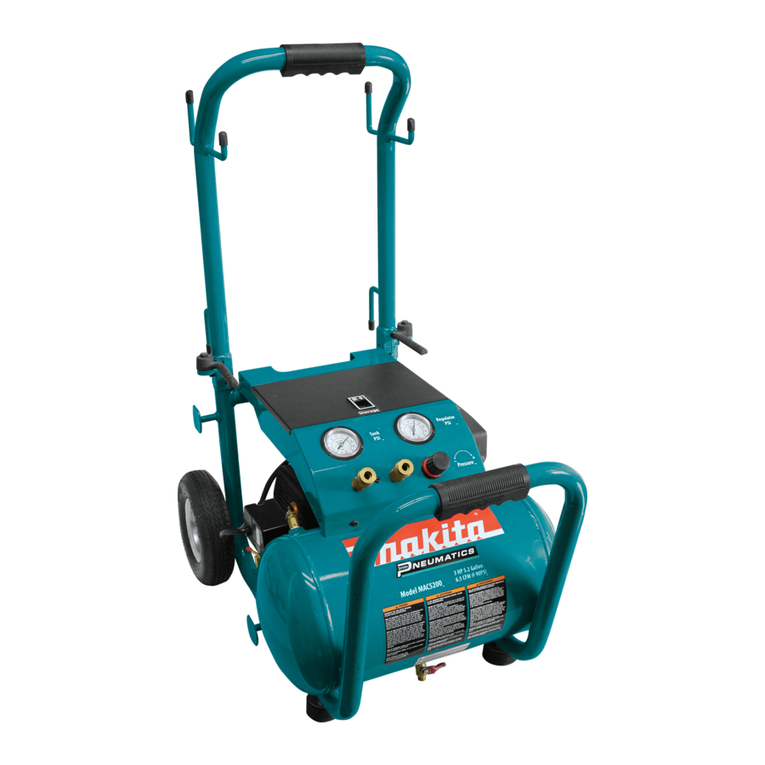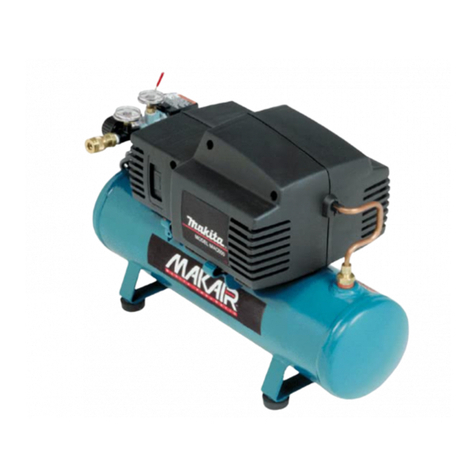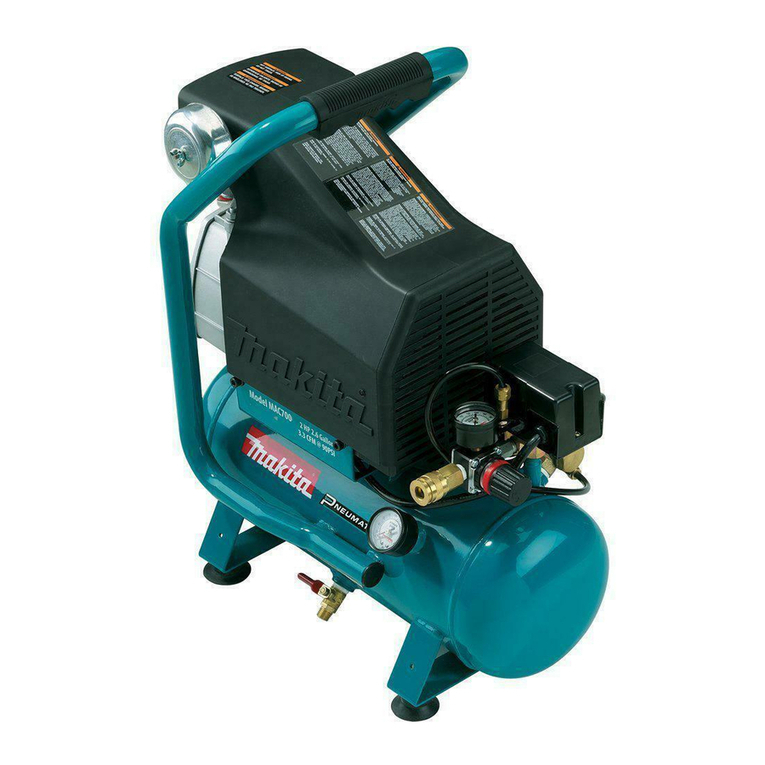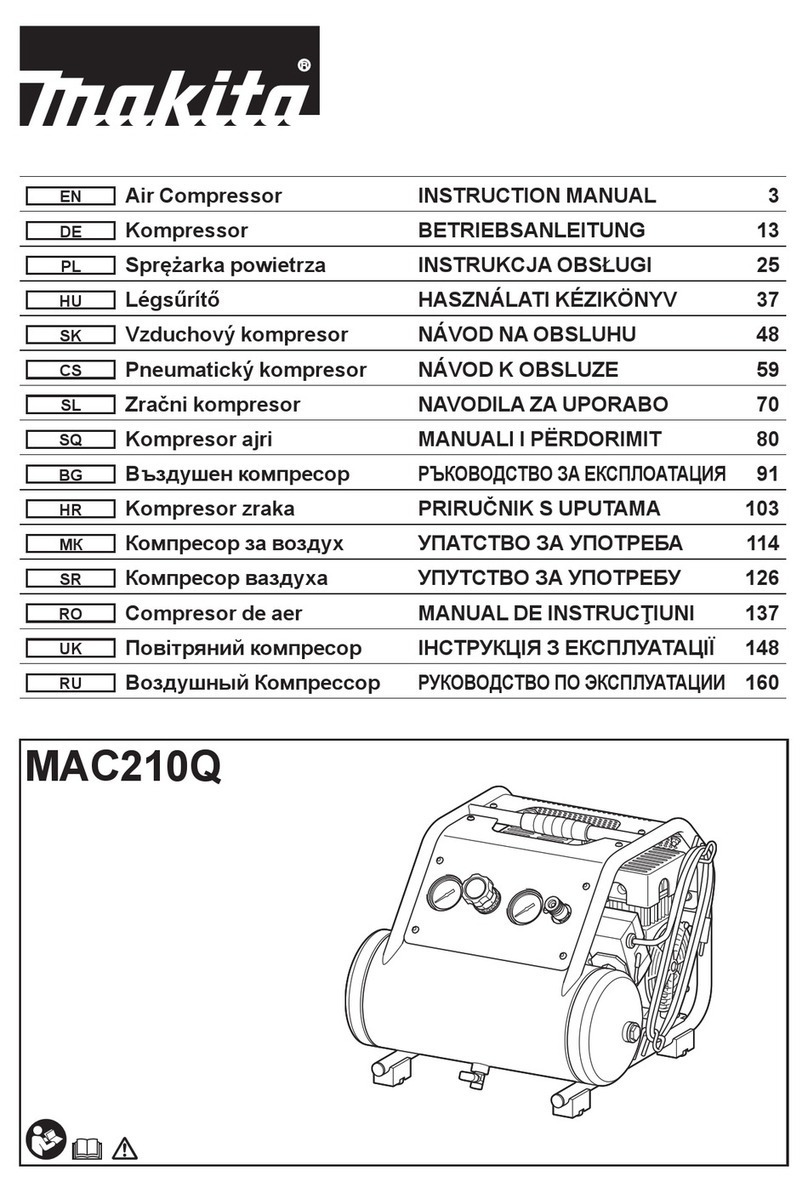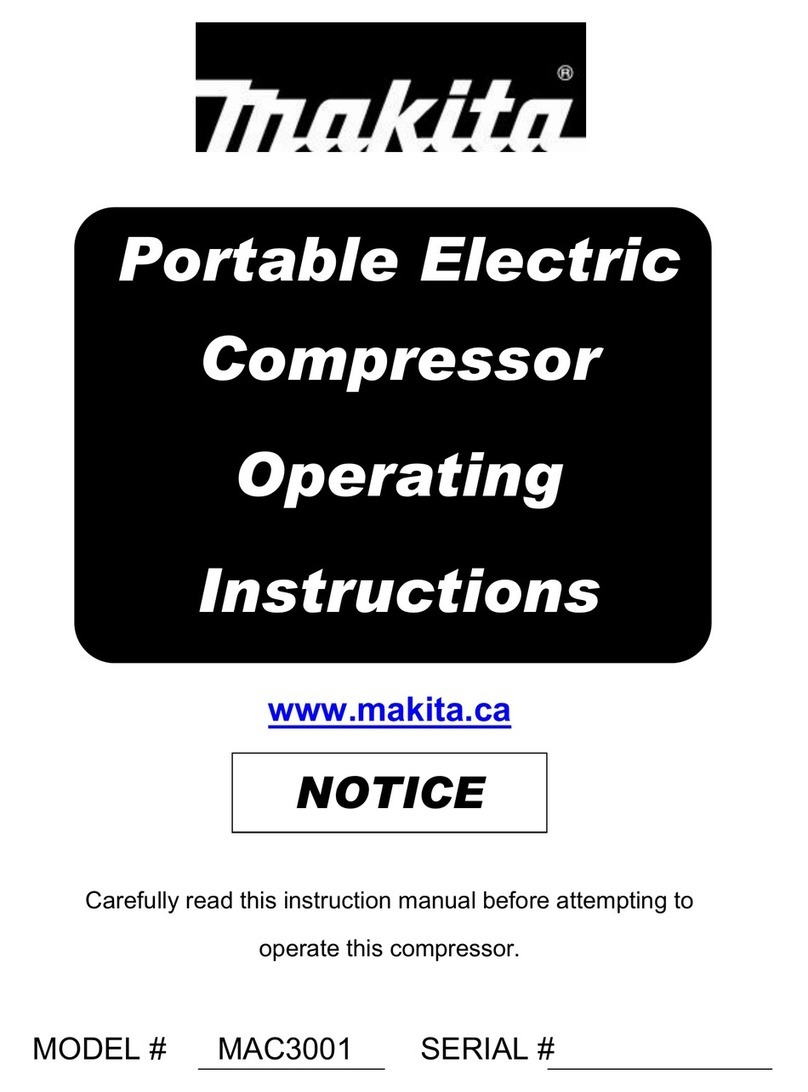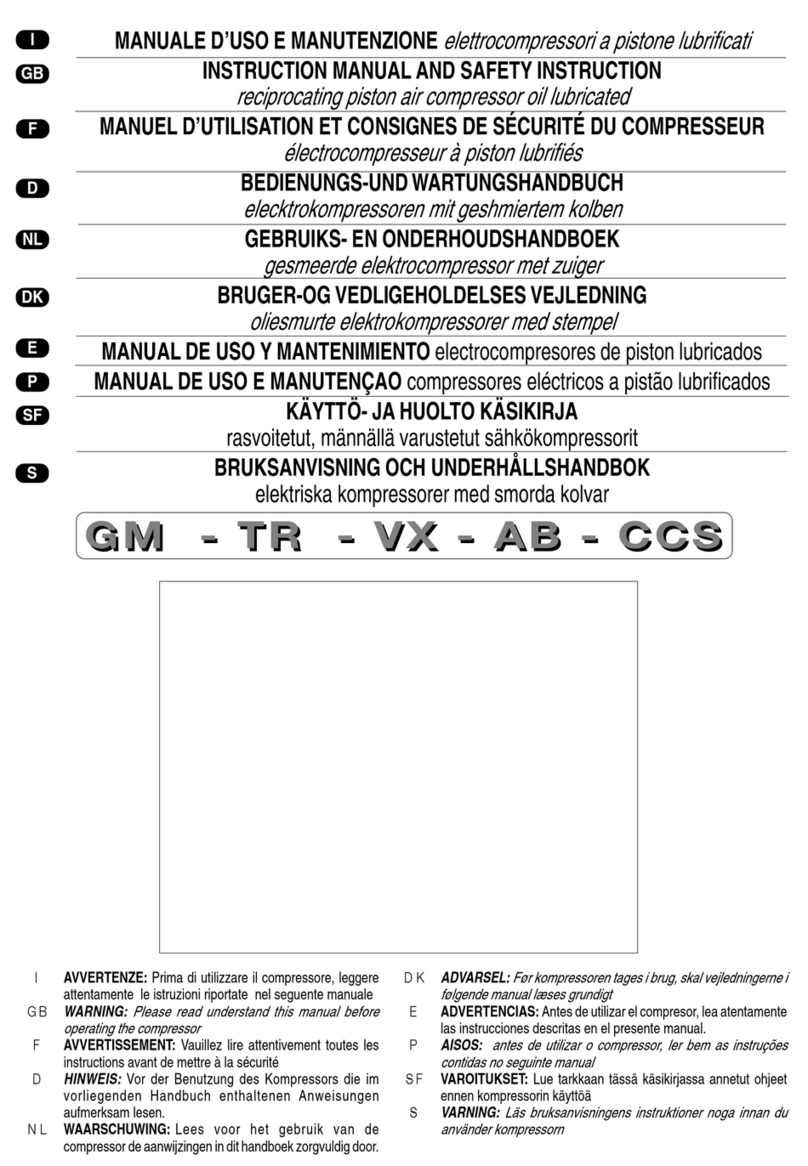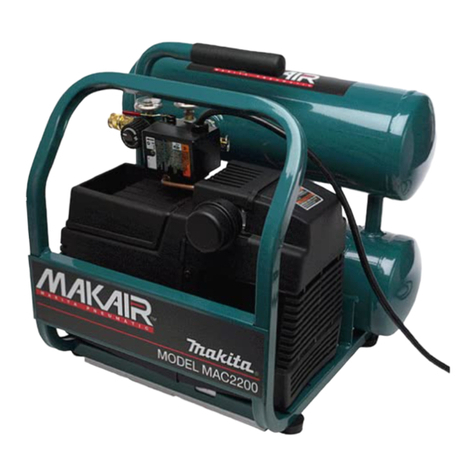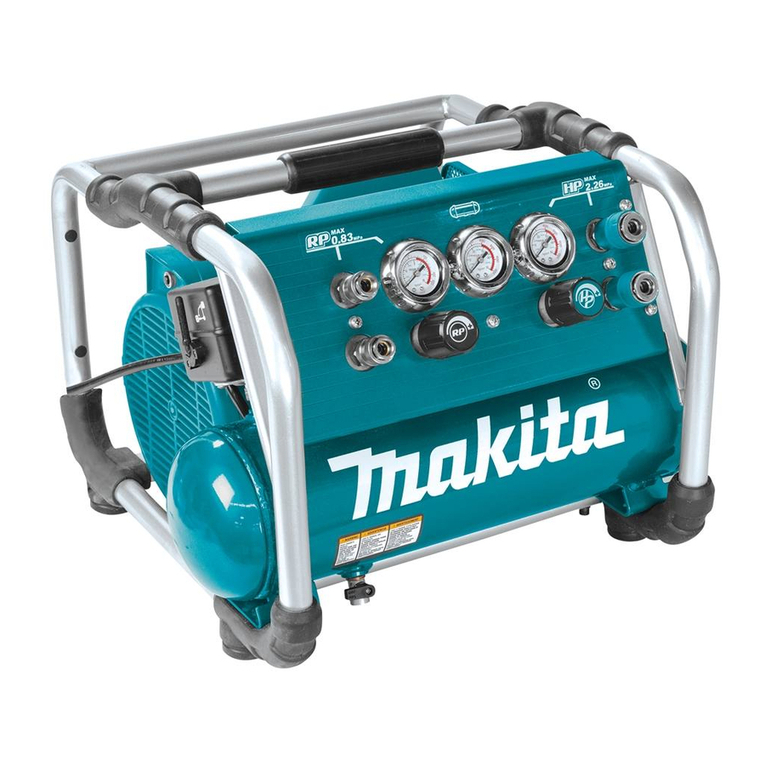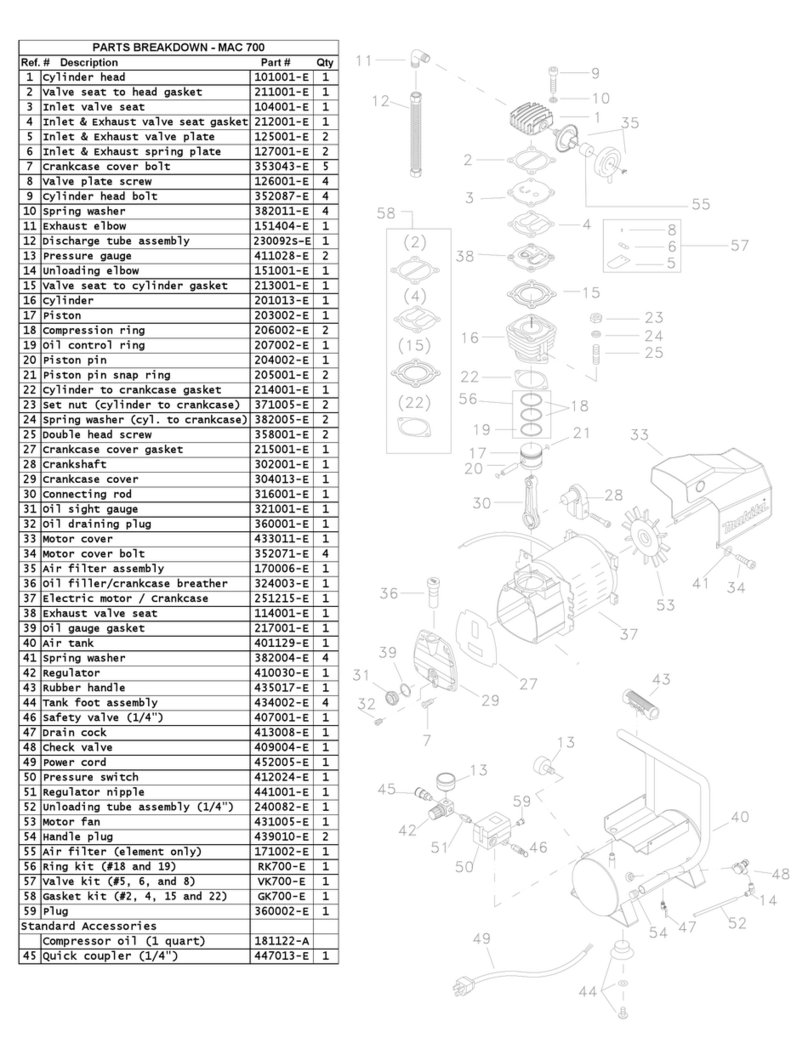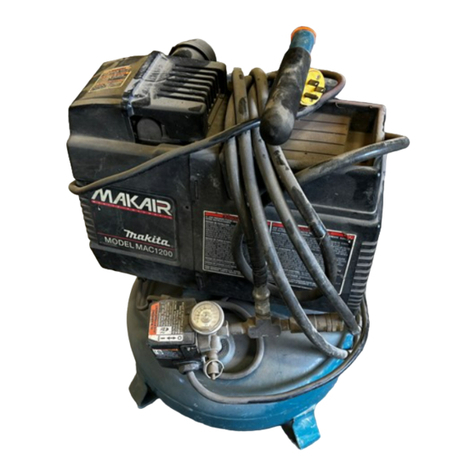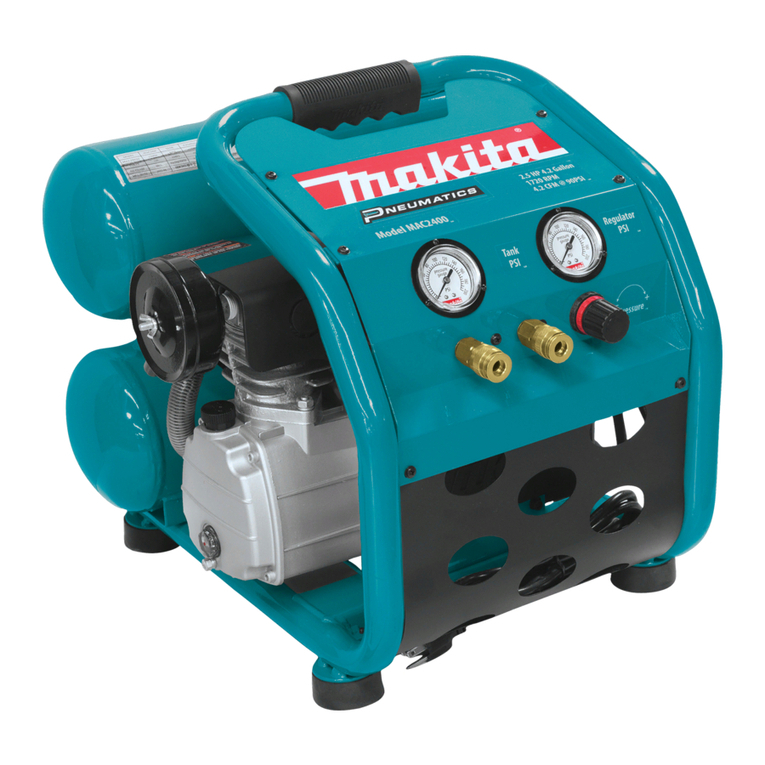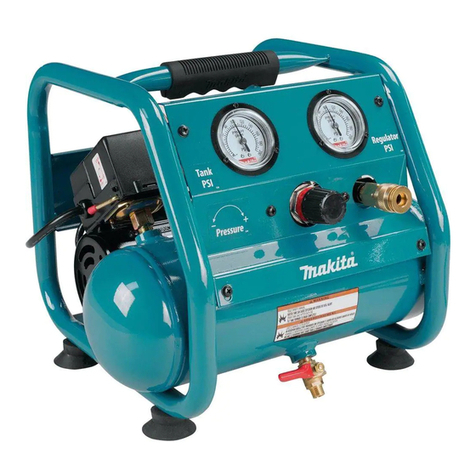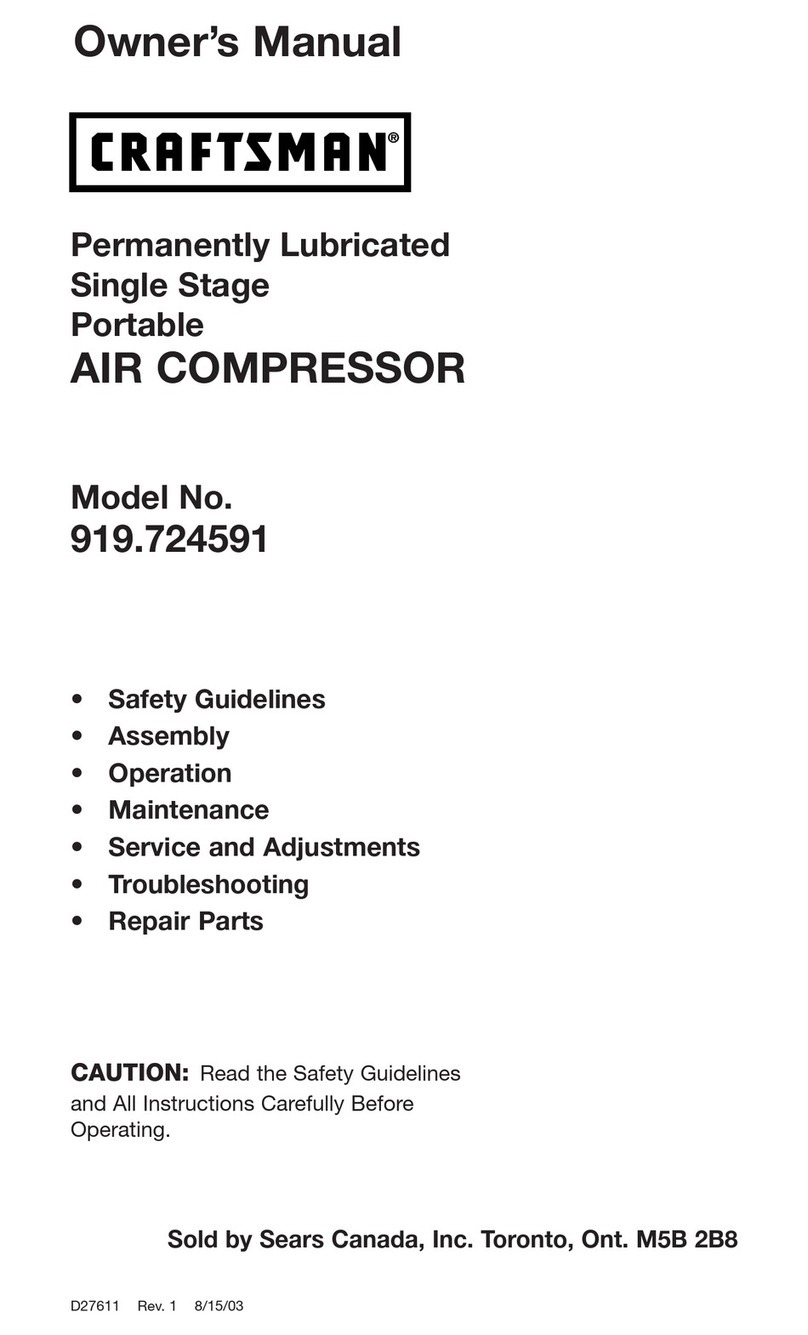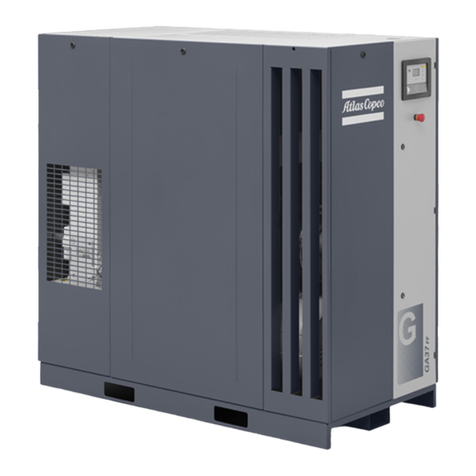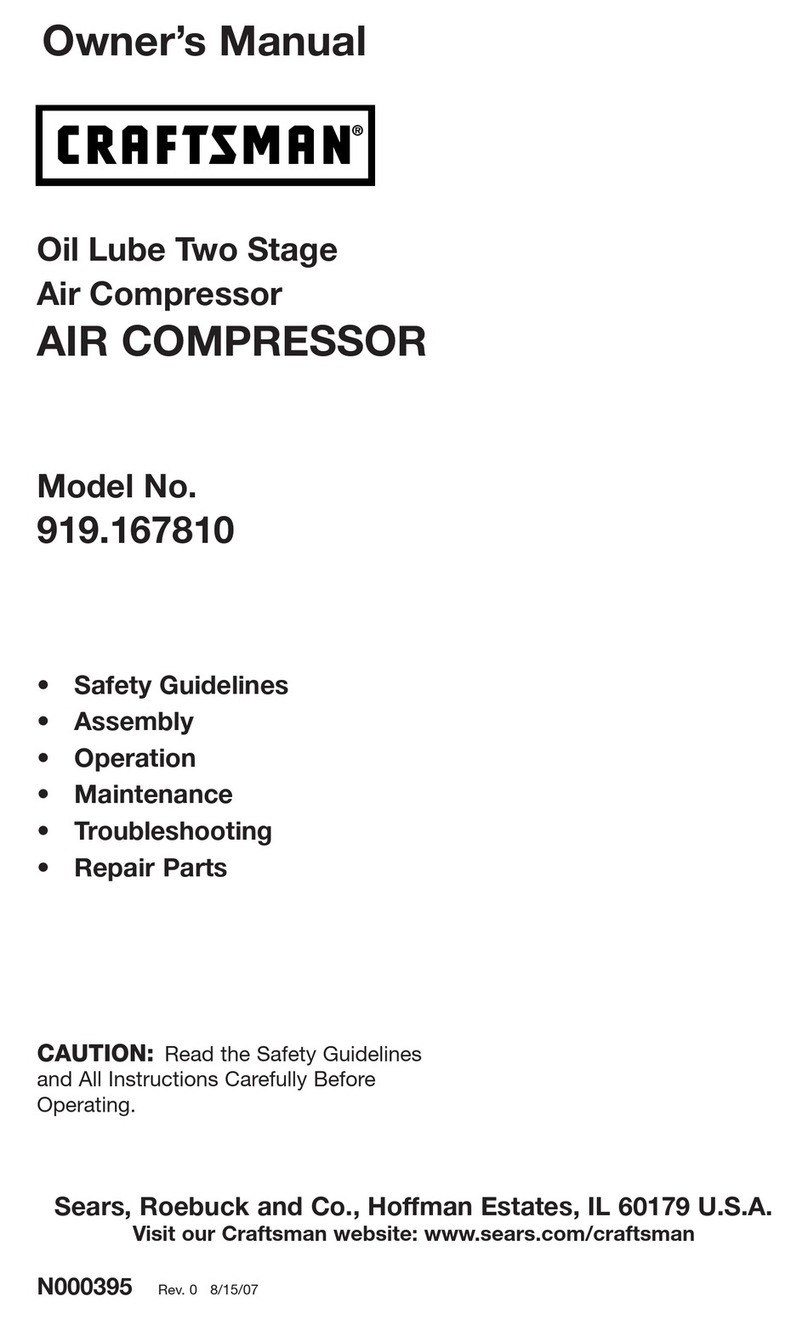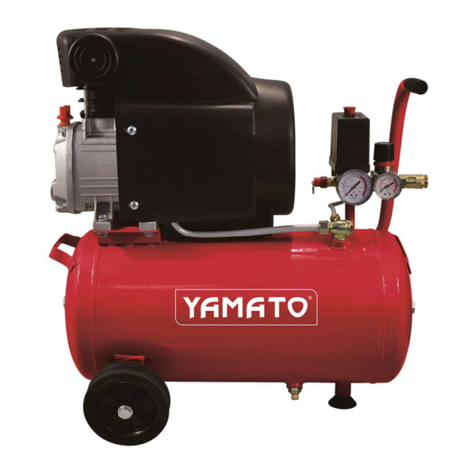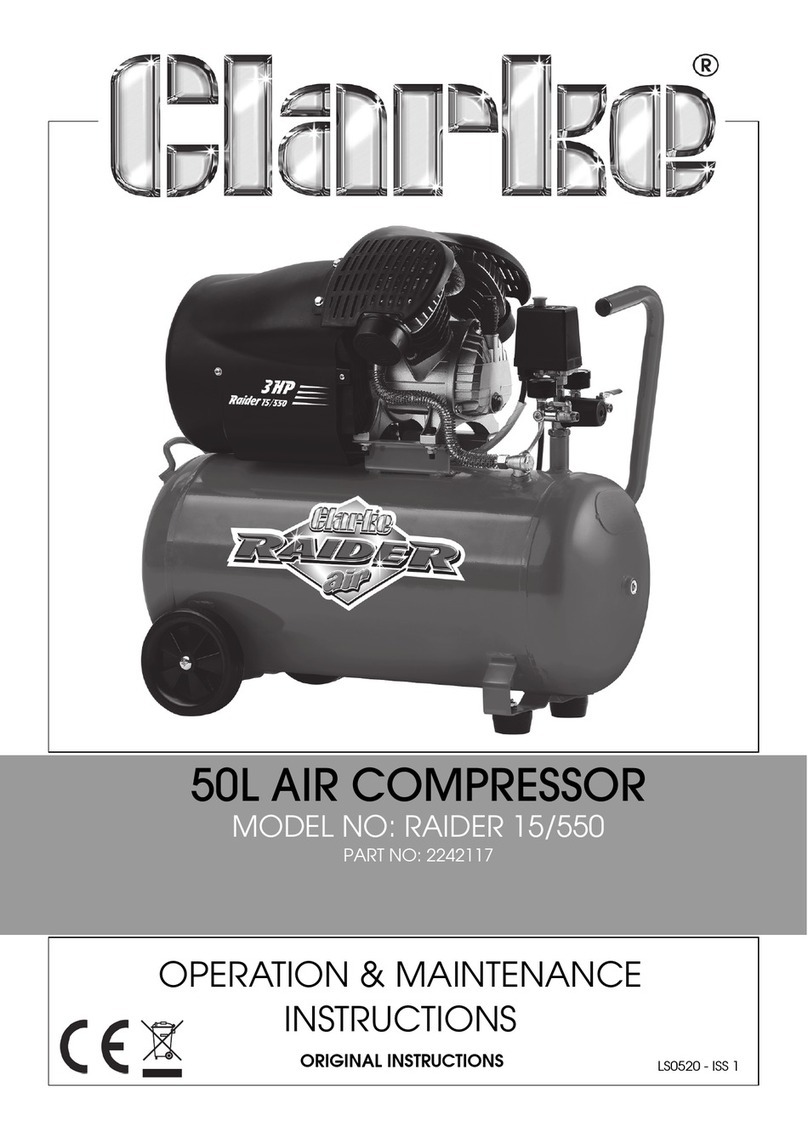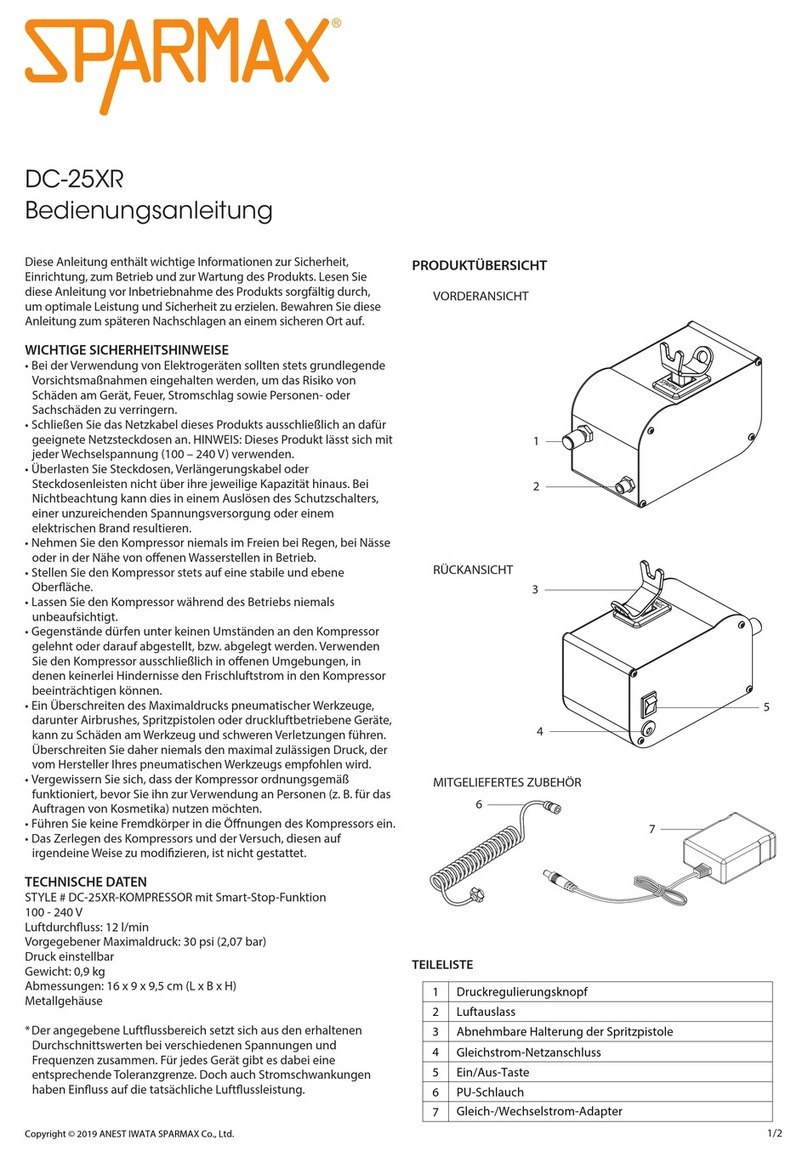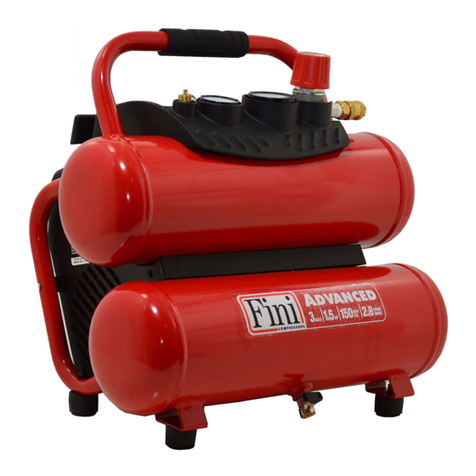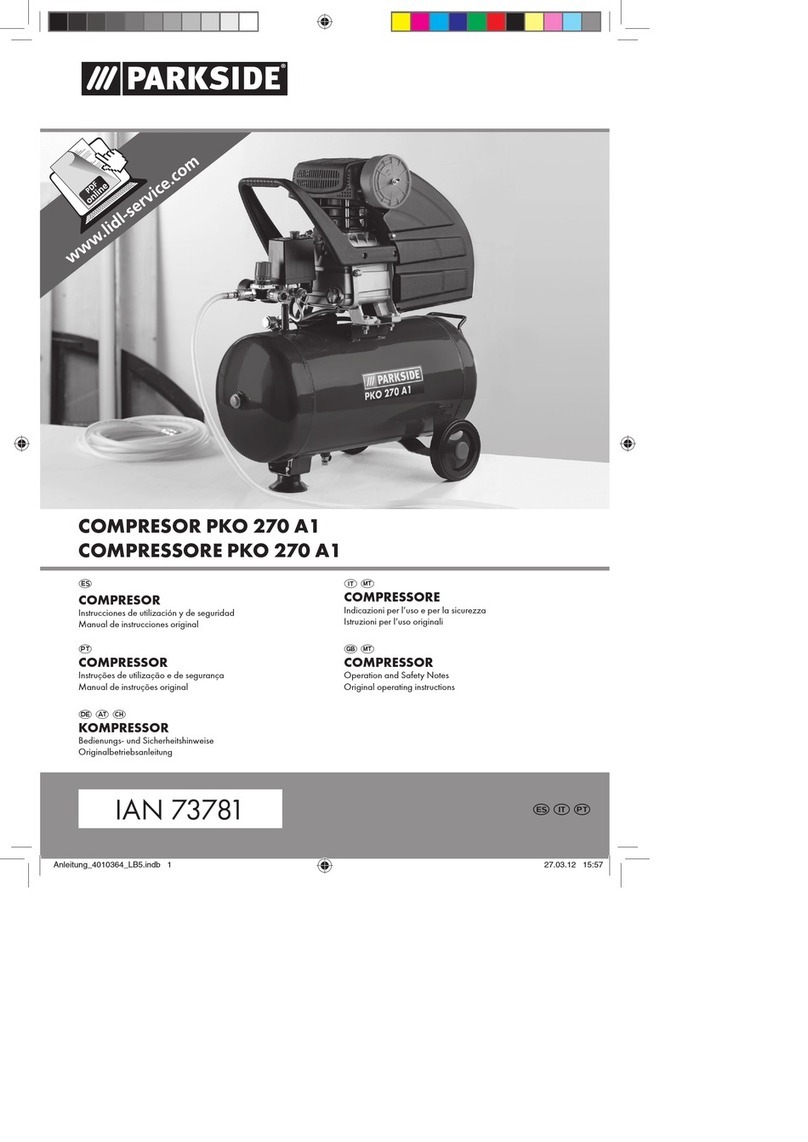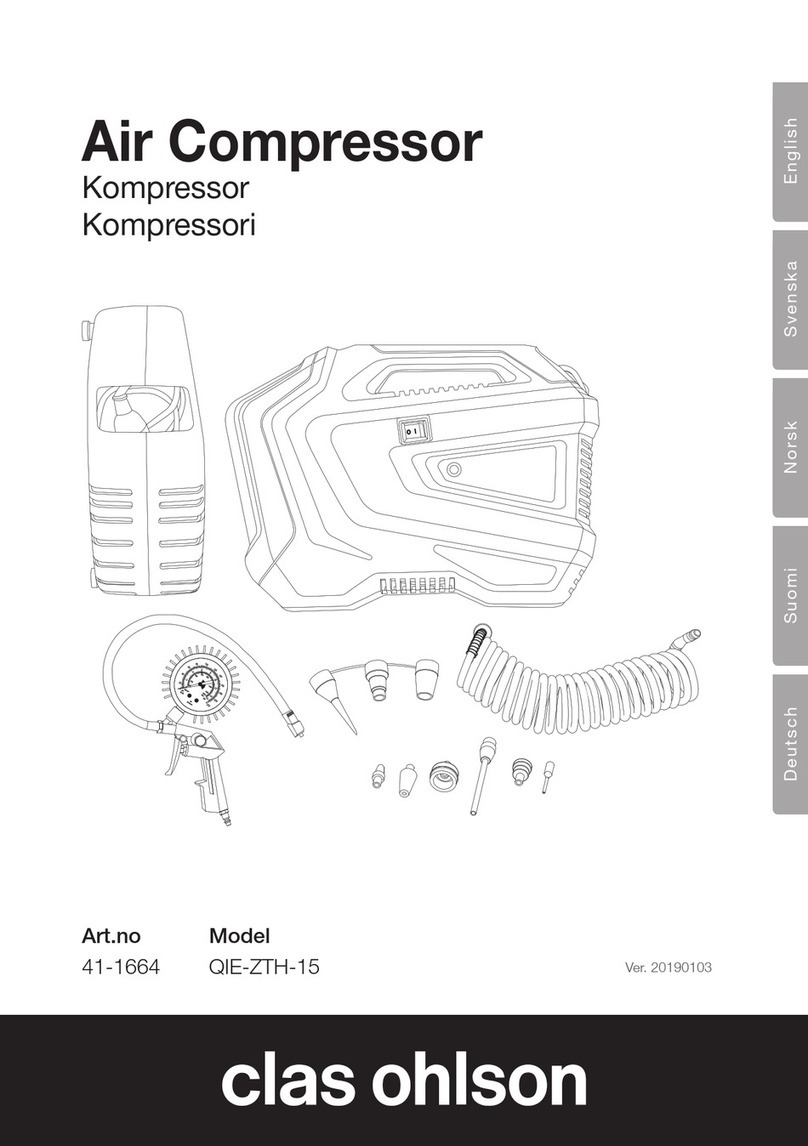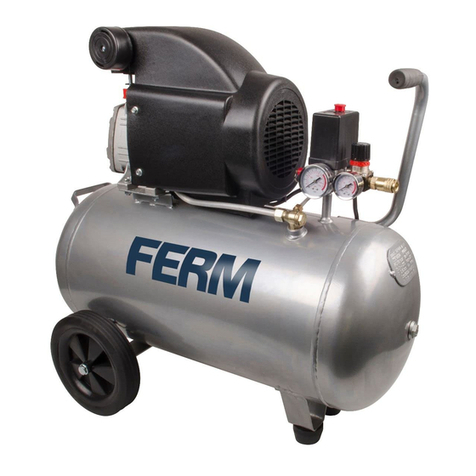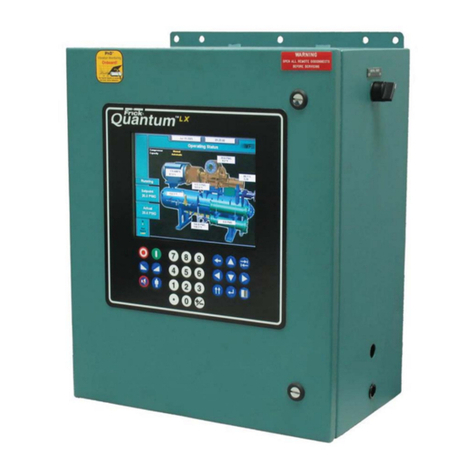2
IT LEGGERE IL LIBRETTO DI ISTRUZIONI
Prima di posizionare, mettere in funzione o intervenire sul compressore, leggere attentamente il libretto
istruzioni.
GB READ THEINSTRUCTION HANDBOOK
Befor e positioni ng, operating or adj usting the compressor, read the instruction handbookcarefully.
FR LIRE LANOTICED'INSTRUCTIONS
Avant de positionner, mettre en ser vice ou inter venir sur le compresseur, lire attentivement la notice
d'instructions.
DE GEBRAUCHSANLEITUNG LESEN
Lesen Si e die Gebrauchsanleitung sorgfältig durch, bevor Sie den Kompressor aufstellen, in Betrieb nehmen
oder Eingriffe daran vornehmen.
NL HET INSTRUCTIEBOEKJE LEZEN
Alvorens de c ompressor te plaatsen, in werki ng te stellen of erop tussen te komen, aandachtig het
instructieboekjelezen
DK LÆSBRUGERVEJLEDNINGEN
Før anbringelse og start af kompressoren eller i ndgreb på denne, skal bruger vejledningen læses grundigt.
ES LEER EL MANUAL DEINSTRUCCIONES
Antes de colocar, poner en función o inter venir en el c ompresor, l eer atentamente el manual de instrucciones.
PT LER O MANUAL DEINSTRUÇÕES
Ler atentamente o manual de instruções antes de instalar, pôr em funcionamento ou inter vir no compressor
FI LUE KÄYTTÖOPAS
Ennen kompressorin asetusta, käynnistystä tai siihen muuten puuttumista lue huolella käyttöopas
SE LÄS BRUKSANVISNINGEN
Läs bruksanvisningen noga innan du installer ar, använder eller utför underhållsarbete på kompressorn
________________________________________________________________________________
IT RISCHIO DI TEMPERATURE ELEVATE
Attenzione: nel compressore ci sono alcune parti che potrebber o raggiungere temperature elevate.
GB RISK OF HIGH TEMPERATURES
Caution: the compressor contains some parts which might reach high temperatures.
FR RISQUE DE TEMPERATURES ELEVEES
Attention : certaines parties du c ompresseur peuvent atteindr e des températures élevées.
DE GEFÄHRDUNGDURCH HEISSE OBERFLÄCHEN
Vorsicht! Im Kompressor befinden sich einige Teile, die sich stark erhitzen können.
NL RISICOVAN HOGE TEMPERATUREN
Opgelet op de compressor zijn er enkel e delen die zeer hoge temperaturen zouden kunnen berei ken
DK RISIKOFOR HØJETEMPERATURER
Pas på: kompressor en indehol der dele, der kan nå meget høje temperaturer.
ES RIESGODE TEMPERATURASELEVADAS
Atenci ón: algunas partes del compresor pueden alcanzar temperaturas elevadas.
PT PERIGO DE TEMPERATURAS ELEVADAS
Antenção, no c ompressor existem algumas partes que poder ão atingir temper aturas elevadas
FI KORKEAN LÄMPÖTILAN VAAR A
Huomio: kompressorissa on osia, j okta voi vat kuumettua huomattavasti.
SE RISK FÖR HÖG TEMPERATUR
Varning! Inuti kompressornfinns det vissa delar som kan uppnå mycket hög temperatur.


